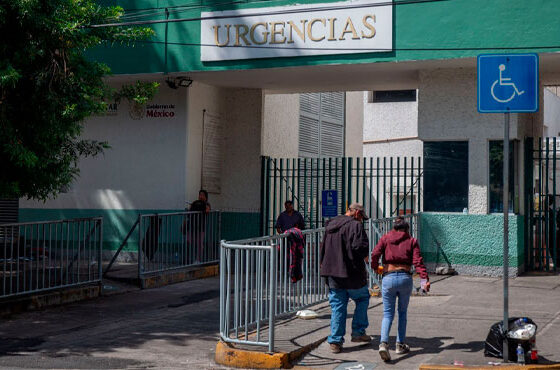
By Matilde Pérez
In 2026 we will not have a health system like Denmark either. According to the National Survey of Household Income and Expenses (ENIGH), in 2024 there were 48 million people in Mexico, equivalent to 37 percent of the population, without access to public health services. And the fact is that, in our country, we have a fragmented health system, made up of more than eight institutions that offer health services for the population with or without social security, whose coverage, infrastructure and staff are unequal.
Achieving the universalization of health is a historical debt, despite the efforts, in the Health Sector Plan 2025-2030, for example, six priority objectives were integrated with concrete actions to benefit the entire population: 1) guarantee universal access to health services; 2) increase the resolution capacity and quality of medical care of the National Health System (SNS); 3) guarantee the timely delivery of medicines and health supplies; 4) improve health promotion and disease prevention; 5) strengthen the integration and modernization of the SNS to improve care; and 6) reduce health and care gaps for priority and vulnerable populations.
However, to materialize these objectives and actions, sufficient and progressive resources are required. Historically, the budget for public health has been very low and 2026 will be no exception. On November 6, the Chamber of Deputies approved the Federal Expenditure Budget (PEF) 2026, with specific modifications, none of them in health matters.
Since the Project was presented, in various forums and spaces, various organizations have shown the low budget allocation and the impacts it would have on the provision of services, especially on those people in the most vulnerable situation. Our concerns were also taken up by some deputies during the discussion of the PEF 2026, who raised reservations linked to the health sector. The most repeated concern was the limited allocation of resources, despite evidence that hospitals and health centers still do not have medicines, equipment, supplies and vaccines available, forcing families to go into debt to pay for treatments that should be free.
These reservations were concentrated in reallocation and modification proposals. For example, they proposed that 51 percent of the subsidy to Mexicana de Aviación be allocated to health to guarantee decent medical care, equipment and medicines in rural communities; also that 130 billion pesos be redirected for the acquisition of medicines; 29 billion pesos to strengthen health institutes and hospitals, an increase of more than 11 percent to the IMSS; increased resources for mental health, with at least 30 percent of that spending on community care and prevention; and a reallocation of seven thousand 652 million 618 thousand 756 pesos from the Mayan Train to restore coverage, strengthen services and address accumulated inflation, as long as transparency and accountability were guaranteed, among others.
However, the majority in Congress rejected these reservations and did not take action on the demands of civil society. In this way, the health budget in 2026 remains as established in the initial Project, with 965 billion pesos, an amount that represents an increase of 4.5 percent compared to 2025 (923 billion pesos), but which is lower than that of 2023 and 2024, when it exceeded one trillion pesos. Although the increase is positive, it represents only 2.5 percent of GDP, a figure very far from the six percent recommended by the World Health Organization (WHO).
How will the health budget be distributed in 2026? The only health institution that will have an increase will be the IMSS, with 10.5 percent (more than 52 billion pesos), which will allow it to strengthen care, infrastructure, personnel and supplies. However, this will also widen the existing gap between health systems for populations with and without social security. The institutions with the biggest cuts will be National Defense (-6.3 percent), Pemex (-5.9 percent), the ISSSTE (-4.8 percent), the Health Branch, in charge of the Ministry of Health (-4.4 percent) and the IMSS-Wellbeing (-1.4 percent). The decrease in the ISSSTE will affect the quality of services for its more than 13.7 million beneficiaries. The cut in the Health Branch is also worrying, since the federal Ministry of Health (SSa) is the governing entity of the SNS. The National Institutes of Health will also receive fewer resources.
The 2026 health budget is not progressive and is very far from consolidating a universal health system. On the contrary, it maintains a fragmented, regressive and exclusive model, which widens the gaps in access to health services.
Health must be assumed as a State commitment. It must have long-term goals with equity, access and epidemiological criteria, which will allow it to progressively reduce the gaps between population groups, regions and health institutions. To achieve this, it is important to draw up a health budget allocation policy that establishes the progressive increases that will be made year after year to bring the country closer to a spending level close to six percent of GDP proposed by the WHO and that does not depend on the political will of the legislators in office. Otherwise, instead of getting closer, we will be further and further away from Denmark.
Matilde is a researcher in the Accountability and Fight against Corruption program of @FundarMexico.

